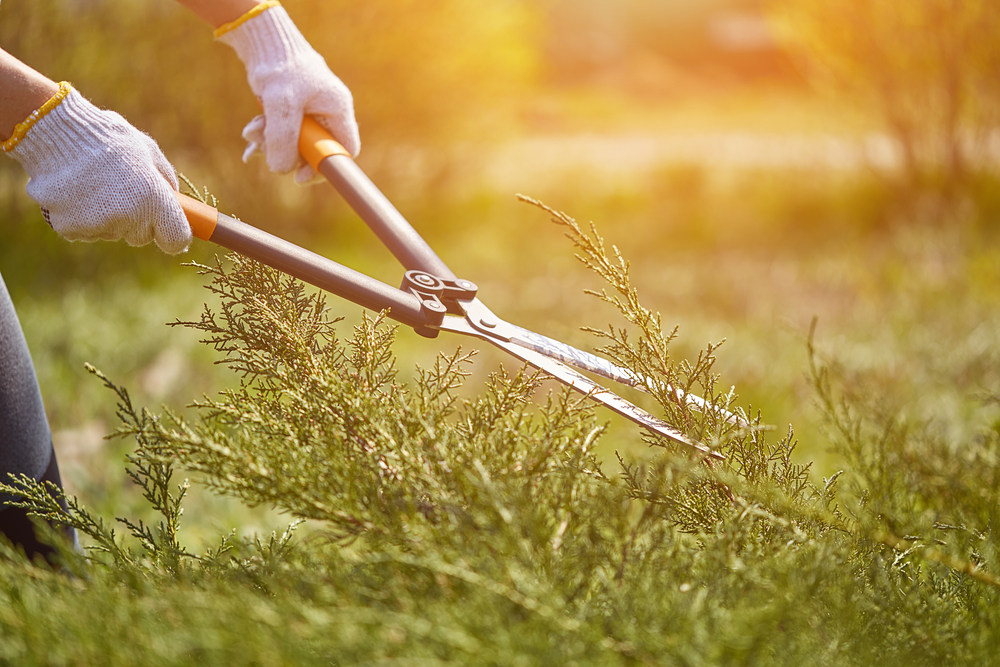A Guide to Lawn and Landscape Maintenance
In theory, landscape maintenance shouldn’t be so hard, right? Just trim, water, and fertilizer. In actuality, landscape maintenance comes with a host of problems. Maybe your grass is dying in patches, or weeds have taken over your lawn.
Achieving a beautiful lawn and garden takes time, patience, and the right information. From pruning to fertilization and pest control, here’s everything you need to know about proper landscape maintenance.

Landscape Maintenance Tips and Tricks
1. A healthy lawn starts with healthy soil
For a healthy lawn, your soil should ideally be loam soil – a balance of sand, silt, and clay. Such a composition is great at retaining both moisture and nutrients. It allows for proper aeration, creating the perfect foundation for plant growth.
Nutrient-stressed soils are breeding grounds for weeds. Naturally, healthy soil has a highly diverse array of microscopic life. It’s this blend of living organisms that helps create ideal growing conditions and strengthen your lawn against disease and pests. Your grass will have deeper, healthier roots and will naturally thrive in all seasons.
So, how can you make your lawn soil healthy?
- Feed your soil with organic matter such as shredded leaves, humus, peat moss, and home composting organic matter
- Protect your soil with organic mulching, as this will lessen weed growth and germination and help retain soil moisture
- Remove weeds as they steal nutrients from your grass
You might also consider getting your soil tested. Just because your dirt looks rich doesn’t mean it’s the right pH for grass and plant growth, as most grasses prefer a pH of 6.0 to 7.2. Fortunately, you can easily fix soil PH by adding lime to raise it or iron to lower it.
2. Tread and till with care
Soil compaction occurs with too much foot traffic. Treat your garden soil with extra care by walking on paths and not parking or riding heavy vehicles on the lawn – especially when the soil is wet and compacted. Soil compaction increases soil density preventing plant roots from penetrating the soil properly. As such, your plants or grass will be unable to exploit the soil for nutrients and moisture.
If your lawn soil is hard to the touch or your grass looks stressed, you might have compaction problems. Aerate your lawn at least once a year to improve the flow of oxygen and nutrients. You can hire a landscape maintenance service to aerate your lawn for you or invest in aerators and do it yourself like a pro.
3. Re-assess your mowing technique
The number one cause of a lackluster lawn is mowing too short, so it’s important to keep your lawn at the right height throughout the year. You never want to cut more than 1/3 of the existing grass blade as you could burn the roots. Doing so also reduces water retention, which means you’ll have to water your yard more often.
On that note, it’s important to grow the grass variety that’s best adapted to the local environment. You’ll find that such grass requires less maintenance to look good.
4. Water properly
Now, this doesn’t mean you should water your lawn more – you just need to change the way you water. Aim to water deeply instead.
Water conservation and a healthy, luscious lawn aren’t necessarily mutually exclusive. Most lawn grasses need the equivalent of 1 inch of rainfall to retain a healthy and attractive appearance. If it doesn’t often rain in your area, supplemental irrigation is an absolute must. There’s no hard-and-fast definition for watering deeply. It just means watering in a way that soaks the soil, as most plant roots aren’t sitting close to the surface.
Consider investing in a drip irrigation system as it will water your grass slowly, thereby limiting evaporation concerns.
5. Mulch for your flowerbeds
Mulching is important for a few reasons:
- It insulates the soil, providing a buffer from heat and cold temperatures
- It helps retain soil moisture
- It prevents soil compaction
- It prevents weeds from popping up in your flower beds
- It helps control soil erosion, enabling you to retain the healthy layer of fertile soil
6. Address aggressive weeds early
It’s best to deal with weeds in early spring just as they’re popping up. The longer you allow them to grow, the more deep-rooted they’ll become. You may opt for an organic herbicide, but the best way to minimize weed is through good cultural practices.
- Maintain the health of your soil
- Leave mow clippings on the grass for nutrients and protection
- Devote parts of your lawn to wildflowers
- Do not mow your grass too short
Work with a Landscape Business You Can Trust
We’ve been creating and maintaining beautiful landscapes for years. Contact us for more tips and tricks on keeping your landscaping manageable and low maintenance.
You can leave a response, or trackback from your own site. Back to Top
Leave a Reply





